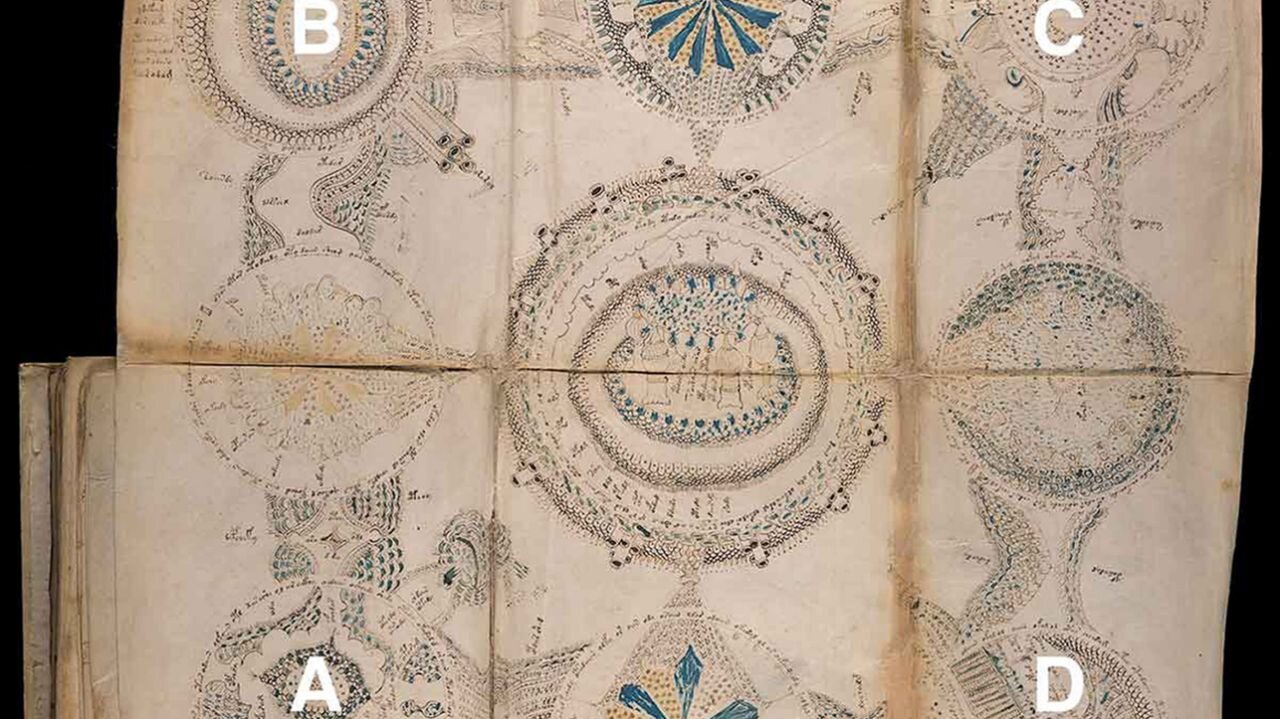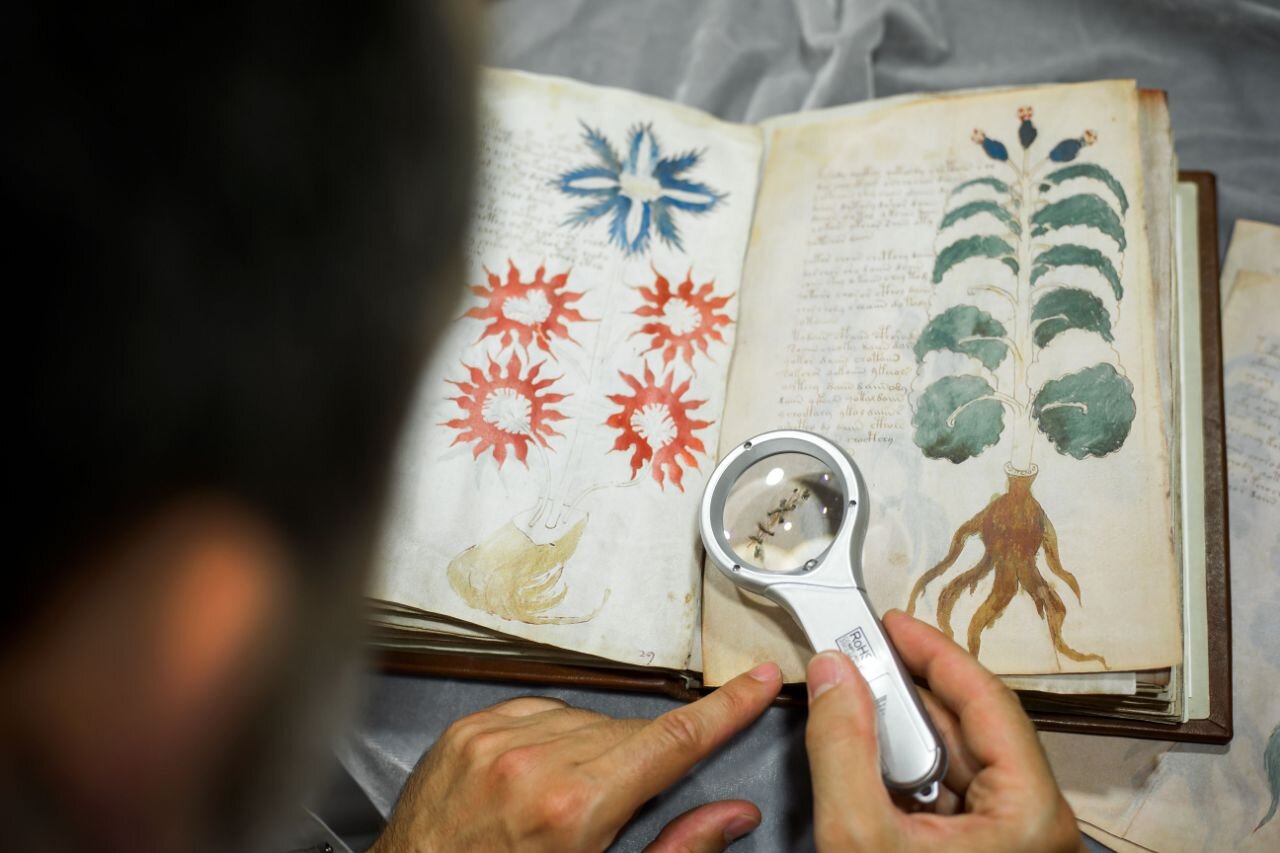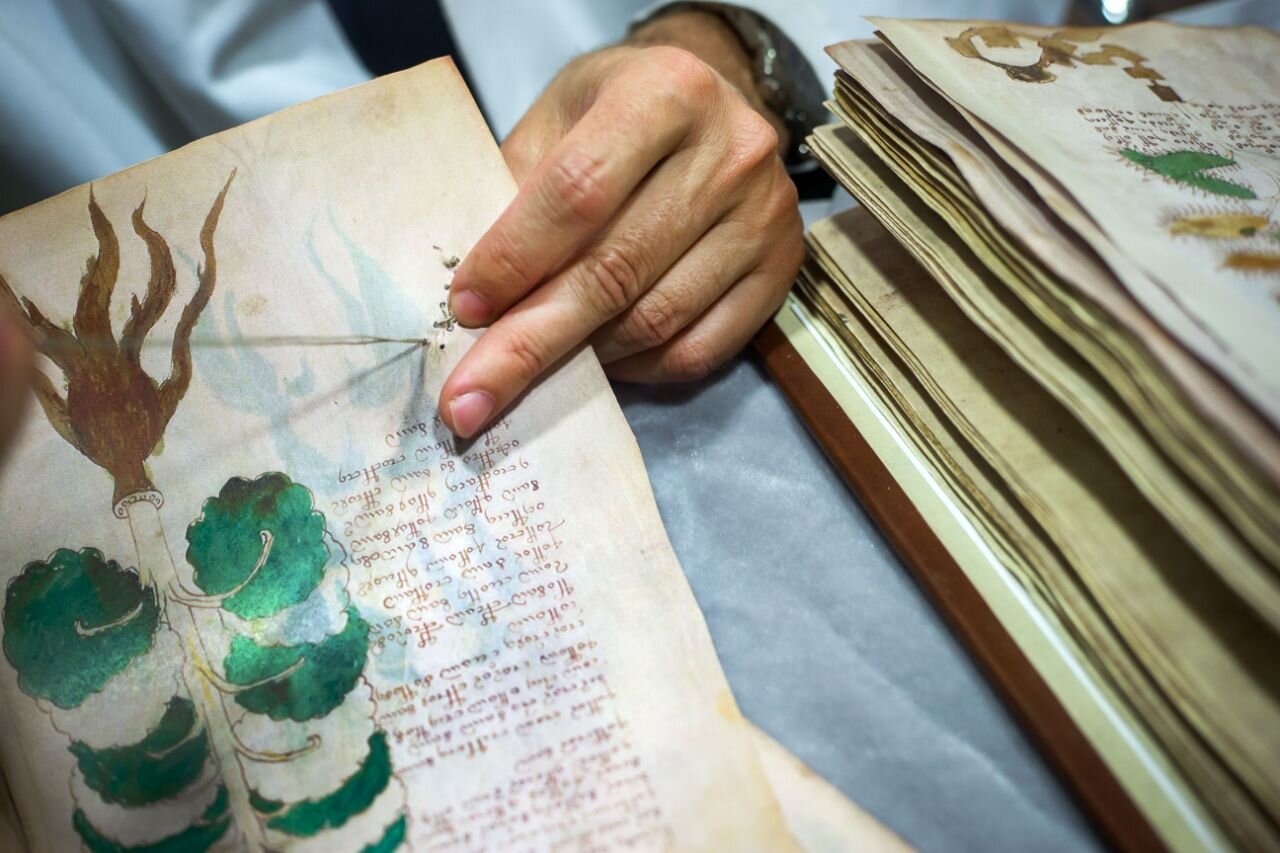nivek
As Above So Below
This manuscript is very fascinating to me, I have looked through it and always wondered exactly what was written...I first saw became aware of it when I was traveling in Canada and stay briefly with a friend, he had a copy of this manuscript...
'World's most mysterious manuscript' has finally been decoded after 500 years
It’s been described as the most mysterious manuscript on Earth, written in an unknown language and script, and showing images of strange, ‘alien’ plant species. But the Voynich Manuscript – which has resisted all attempts to decode it for over a century – has finally yielded up its secrets.
Dr Gerard Cheshire took two weeks, using a combination of lateral thinking and ingenuity, to unravel the Voynich Manuscript, which features in the Indiana Jones films.
The Voynich manuscript is a medieval, handwritten and illustrated text, which has been carbon-dated to the mid-15th century.
It is named after Wilfrid M Voynich, a Polish book dealer and antiquarian, who purchased the manuscript in 1912. It is currently housed at Yale University, where it is filed as item MS408 in the Beinecke Library of rare books and manuscripts. Among those who have famously attempted to crack the code are Alan Turing and his colleagues at Bletchley Park.
Dr Cheshire, a research associate at the University of Bristol, described how he successfully deciphered the manuscript’s codex and, at the same time, revealed the only known example of proto-Romance language.
‘I experienced a series of ‘eureka’ moments whilst deciphering the code, followed by a sense of disbelief and excitement when I realised the magnitude of the achievement, both in terms of its linguistic importance and the revelations about the origin and content of the manuscript,’ he said.
‘What it reveals is even more amazing than the myths and fantasies it has generated.
‘For example, the manuscript was compiled by Dominican nuns as a source of reference for Maria of Castile, Queen of Aragon, who happens to have been great-aunt to Catherine of Aragon. ‘It is also no exaggeration to say this work represents one of the most important developments to date in Romance linguistics.
‘The manuscript is written in proto-Romance – ancestral to today’s Romance languages including Portuguese, Spanish, French, Italian, Romanian, Catalan and Galician.
‘The language used was ubiquitous in the Mediterranean during the Medieval period, but it was seldom written in official or important documents because Latin was the language of royalty, church and government.
‘As a result, proto-Romance was lost from the record, until now.’
Dr Cheshire also explained in linguistic terms what made the manuscript so unusual.
‘It uses an extinct language. Its alphabet is a combination of unfamiliar and more familiar symbols,’ he said.
‘It includes no dedicated punctuation marks, although some letters have symbol variants to indicate punctuation or phonetic accents.
‘All of the letters are in lower case and there are no double consonants.
‘It includes diphthong, triphthongs, quadriphthongs and even quintiphthongs for the abbreviation of phonetic components.
‘It also includes some words and abbreviations in Latin.’
The next step is to use this knowledge to translate the entire manuscript and compile a lexicon, which Dr Cheshire acknowledged will take some time and funding, as it comprises more than 200 pages.



'World's most mysterious manuscript' has finally been decoded after 500 years
It’s been described as the most mysterious manuscript on Earth, written in an unknown language and script, and showing images of strange, ‘alien’ plant species. But the Voynich Manuscript – which has resisted all attempts to decode it for over a century – has finally yielded up its secrets.
Dr Gerard Cheshire took two weeks, using a combination of lateral thinking and ingenuity, to unravel the Voynich Manuscript, which features in the Indiana Jones films.
The Voynich manuscript is a medieval, handwritten and illustrated text, which has been carbon-dated to the mid-15th century.
It is named after Wilfrid M Voynich, a Polish book dealer and antiquarian, who purchased the manuscript in 1912. It is currently housed at Yale University, where it is filed as item MS408 in the Beinecke Library of rare books and manuscripts. Among those who have famously attempted to crack the code are Alan Turing and his colleagues at Bletchley Park.
Dr Cheshire, a research associate at the University of Bristol, described how he successfully deciphered the manuscript’s codex and, at the same time, revealed the only known example of proto-Romance language.
‘I experienced a series of ‘eureka’ moments whilst deciphering the code, followed by a sense of disbelief and excitement when I realised the magnitude of the achievement, both in terms of its linguistic importance and the revelations about the origin and content of the manuscript,’ he said.
‘What it reveals is even more amazing than the myths and fantasies it has generated.
‘For example, the manuscript was compiled by Dominican nuns as a source of reference for Maria of Castile, Queen of Aragon, who happens to have been great-aunt to Catherine of Aragon. ‘It is also no exaggeration to say this work represents one of the most important developments to date in Romance linguistics.
‘The manuscript is written in proto-Romance – ancestral to today’s Romance languages including Portuguese, Spanish, French, Italian, Romanian, Catalan and Galician.
‘The language used was ubiquitous in the Mediterranean during the Medieval period, but it was seldom written in official or important documents because Latin was the language of royalty, church and government.
‘As a result, proto-Romance was lost from the record, until now.’
Dr Cheshire also explained in linguistic terms what made the manuscript so unusual.
‘It uses an extinct language. Its alphabet is a combination of unfamiliar and more familiar symbols,’ he said.
‘It includes no dedicated punctuation marks, although some letters have symbol variants to indicate punctuation or phonetic accents.
‘All of the letters are in lower case and there are no double consonants.
‘It includes diphthong, triphthongs, quadriphthongs and even quintiphthongs for the abbreviation of phonetic components.
‘It also includes some words and abbreviations in Latin.’
The next step is to use this knowledge to translate the entire manuscript and compile a lexicon, which Dr Cheshire acknowledged will take some time and funding, as it comprises more than 200 pages.



